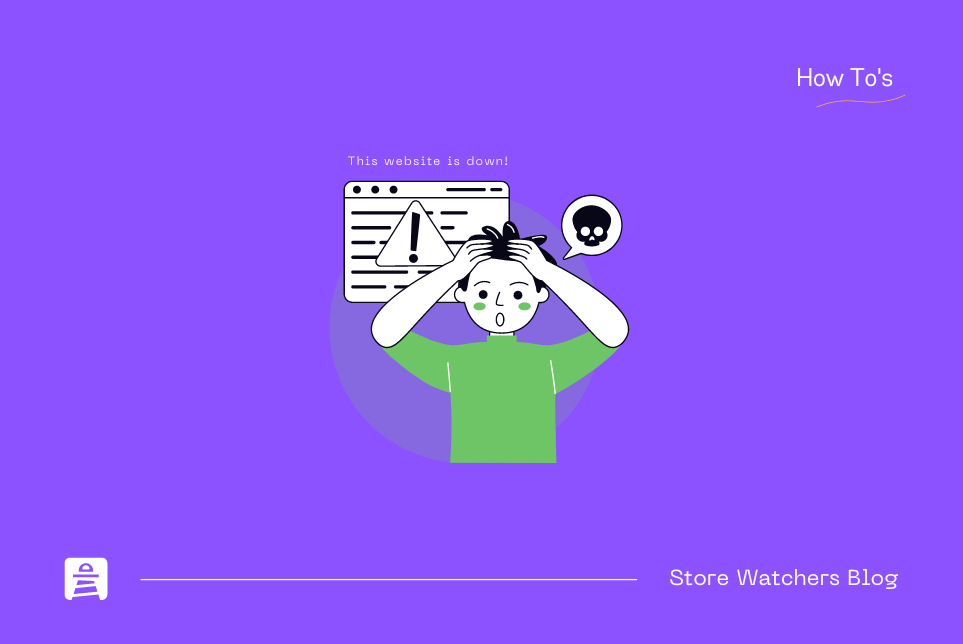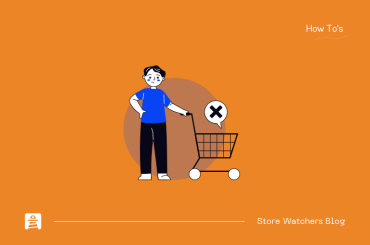In today’s online shopping ecosystem, the availability of an e-commerce store plays a critical role in order to provide a seamless buying experience to customers and increase profits through it. The impact of website downtime on your e-commerce business can translate into huge losses in terms of revenue, customers, missed sales, customer loyalty and whatnot. To ensure that your e-commerce store is running at the optimum level, you should actively monitor it for any problems or downtimes.
This article explains everything about website downtime and its implications for any business having an e-commerce store.
Let’s just start with – what does website downtime mean?
What is website downtime?
When an online website’s resources are unavailable to visitors or not functioning as intended, this is known as website downtime. Website downtime can be caused due to a variety of reasons such as server maintenance, alterations in code, theme incompatibility, or even malicious attacks.
What causes website downtime?
In most cases, you might struggle to find the reason behind a website’s downtime because there are numerous ones ranging on issues with hosting, network, software, hacking, or even human errors.
Let’s take a look at some of the most common causes of website downtime:
- Server Maintenance – If you don’t do regular checks of your server health, you might be missing things that are not up to date for your e-commerce store. You can even see hardware-related issues like disk corruption, memory leakage, etc. This will all lead to website downtime if not properly taken care of.
- Code changes – This can be another reason that leads to website downtime. If there are new code changes pushed by your developer without doing any testing it can make your e-commerce store unavailable to your customers. Just know that even if there is one line of code that isn’t compatible with your current setup, it can lead to website downtime.
- Theme incompatibility issues – If you have recently made any changes to the theme’s code or installed a new plugin or app in your e-commerce store, you may face issues with your site’s functionalities. In some cases, it can also lead to the entire website’s unavailability.
- Hosting provider issues – If the hosting provider is not reliable, you may experience downtime with your e-commerce store. It is essential to have a good hosting provider that can handle all traffic spikes and provide good customer service in case of any problems.
- Malicious attacks – Hackers are always discovering new ways to penetrate into websites and hack them for their own gains. Any malicious attack such as denial-of-service or SQL injection can shut your entire website offline.

Read Also: How To Fix ‘Add-To-Cart Not Working’ issue in Shopify?
What is the impact of website downtime on an e-commerce business?
Website downtime can have several implications for any e-commerce business. Here are some of the impacts:
Impacts your brand image
Building and maintaining your brand image requires a lot of time and resources but it can be ruined in an instant if your ecommerce website is down for a few minutes or hours. You might see lost customers and reduced sales after your site is up. This happens due to customers not being able to view products and purchase them from your store.
Leads to financial losses
Every minute of website downtime leads to financial losses. If your e-commerce website is down for a longer period of time, it can bring your business revenues down very quickly and you may face complications in running your business at a constant pace in the future.
Missed sales opportunities
If your store is down even for a second and your customers are trying to checkout or browse products on your store then you will see many missed sales opportunities and it will ultimately again translate into financial losses.
Decreases website SEO score
SEO is one of the most important strategies that play a huge role in the online visibility of any e-commerce business. If you’ve done a good SEO for your website, your products are being displayed on search engines for the queries searched by your customers and you don’t want to lose all these SEO efforts then you must regularly monitor your website for downtimes.
But if your website is down for a longer period of time, this might impact your SEO because the search engine bots won’t be able to crawl the product pages of your website – this will lead to decreased organic traffic and rankings.
Damage customer loyalty
If you don’t provide a consistent and reliable buying experience to your potential customers, they may never come back again. This can damage customer loyalty and reduce your customer base drastically.
Read Also: How To Fix ‘Checkout Not Working’ error in Shopify? [with examples]
Measuring downtime: uptime metrics, availability and cost
After every downtime occurrence in your store, you must measure the uptime and availability metrics. You can also calculate the cost of the downtime to check at what level your business was impacted in terms of financial losses.
Uptime metrics is a metric that tells you how much time your e-commerce store was up and functioning as expected during a given period of time.
Availability, on the other hand, is a measure of how quickly your website responds to requests from customers. It measures the response time of a server when a request is sent by users. The higher the availability percentage the better it is for your e-commerce business.
You can calculate the availability by using the below equation:
Availability = Uptime ÷ (Uptime + downtime)
Apart from measuring the downtime of your store, it is also important to calculate the cost associated with it.
You can calculate the cost of downtime by using the below equation:
Cost of a downtime = minutes of downtime x cost-per-minute.
This will give you an accurate estimate of the downtime cost for your e-commerce business.
How to prevent website downtime?
Preventing website downtime is not an easy task but with proper planning and monitoring of the e-commerce store, it is possible to keep your website up and running all the time.
Here are some tips to prevent website downtime:
Tip #1: Choose a trusted hosting provider with positive reviews about uptime
Make sure you choose a hosting provider with a good uptime score so that your e-commerce store is always available to customers.
Tip #2: Perform regular maintenance checks
Regularly check the health of your backend server and perform maintenance checks to make sure everything is running smoothly.
Tip #3: Monitor the website regularly
Keep track of the website’s performance with analytics tools like Store Watchers and take corrective measures when needed. You can also conduct test cases for your store that includes testing of add-to-cart functionality, checkout process, search bar, customer login and more.

Tip #4: Update apps & themes
Make sure all the 3rd-party apps and themes are updated so that you don’t face any compatibility issues in your store.
Tip #5: Take basic security measures
One of the important factors to prevent website downtime is to implement 2FA and use strong passwords for your store. This will stop automated attacks carried out by threat actors and prevent your site from downtime.
Tip #6: Monitor third-party services
If your e-commerce store depends on any third-party apps or plugins, make sure that they are also monitored regularly for vulnerabilities or compatibility issues with your installed themes.
Tip #7: Logging errors/unexpected behavior
Logging the previous issues and unexpected behaviors that occurred in the past helps you quickly identify the current cause and also provides your corrective measure to mitigate future issues. You can do this by using an ecommerce monitoring solution. With such solution you can also enable alerts and notifications if something goes wrong with your website.
Tip #8: Develop a downtime response plan
Have a plan ready for how you will respond to any website downtime. This includes who will be contacted, what measures will be taken, and how customers will be notified about the downtime.
By taking these preventive steps, you can ensure that your e-commerce store is always up and running and that your customers can make purchases without any interruption.
Conclusion
The impact of website downtime on your e-commerce business brings huge losses like financial losses, missed sales opportunities, decreased website SEO scores, and damage to customer loyalty. It is therefore essential to take preventive measures to protect your ecommerce store from any website downtime. Doing this will help you run your online store smoothly and keep your customer happy.



![How To Fix ‘Checkout Not Working’ error in Shopify? [with examples] checkout not working in shopify](https://storewatchers.com/blog/wp-content/uploads/2023/03/Blog-Header-Image-370x245.png)